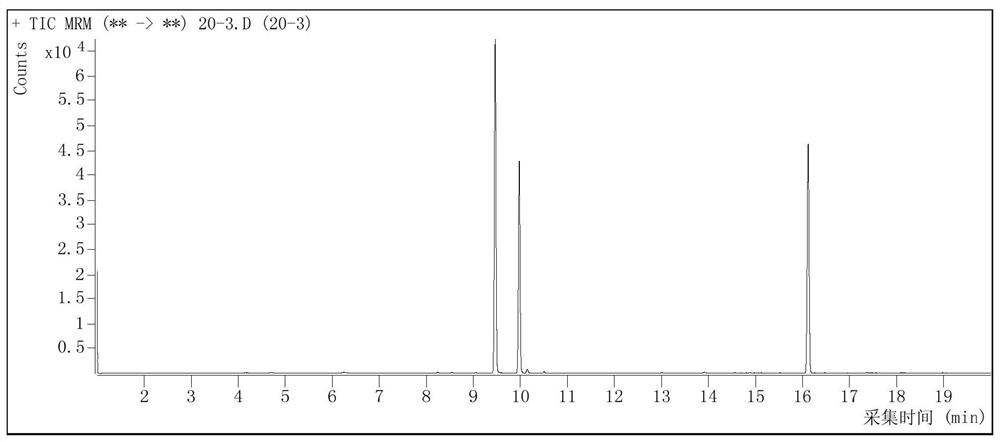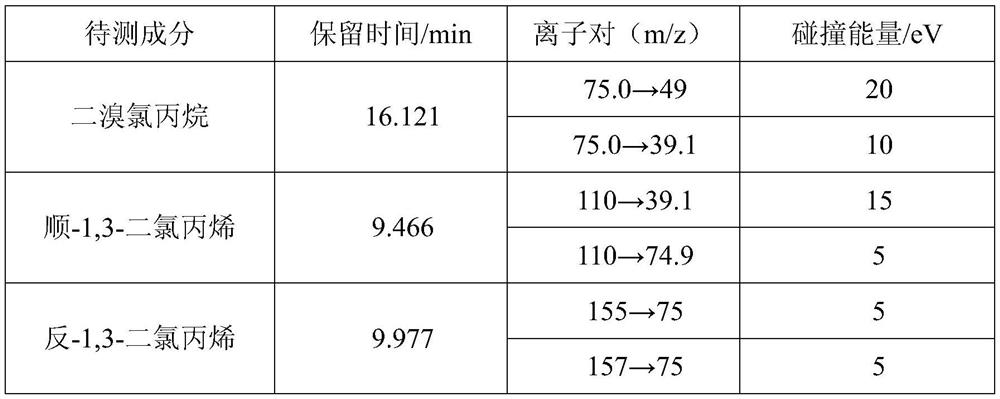Method for detecting residual quantity of dibromochloropropane and 1, 3-dichloropropene in vegetables and fruits by gas chromatography-mass spectrometry
A technology of dibromochloropropane and dichloropropene is applied in the detection field of pesticide residues, can solve problems such as low detection limit, and achieve the effects of low detection limit, high sensitivity and strong selectivity
- Summary
- Abstract
- Description
- Claims
- Application Information
AI Technical Summary
Problems solved by technology
Method used
Image
Examples
Embodiment Construction
[0025] The present invention will be further described in detail below in conjunction with the examples, but the present invention is not limited to the specific examples.
[0026] In the present invention, unless otherwise specified, all equipment and raw materials can be purchased from the market or commonly used in this industry. The methods in the following examples, unless otherwise specified, are conventional methods in this field.
[0027] Instrument: GC-MS / MS 7000D GC / MS (Agilent, USA); 7697A headspace sampler: with headspace vial, sealing gasket, cap (Agilent, USA); 20mL headspace sampling vial; element type 1815D ultra Pure water instrument (Molecular); YP10002 electronic balance (Yuyao Jinnuo balance instrument).
[0028] Reagents: dibromochloropropane (Acstandard, 1000ng / L), cis / trans-1,3-dichloropropene (Acstandard, 1000ng / L). Sodium chloride (NaCl): superior grade, ignited in a muffle furnace at 500°C for 2 hours, cooled to room temperature in a desiccator, and ...
PUM
| Property | Measurement | Unit |
|---|---|---|
| recovery rate | aaaaa | aaaaa |
Abstract
Description
Claims
Application Information
 Login to View More
Login to View More - R&D
- Intellectual Property
- Life Sciences
- Materials
- Tech Scout
- Unparalleled Data Quality
- Higher Quality Content
- 60% Fewer Hallucinations
Browse by: Latest US Patents, China's latest patents, Technical Efficacy Thesaurus, Application Domain, Technology Topic, Popular Technical Reports.
© 2025 PatSnap. All rights reserved.Legal|Privacy policy|Modern Slavery Act Transparency Statement|Sitemap|About US| Contact US: help@patsnap.com



